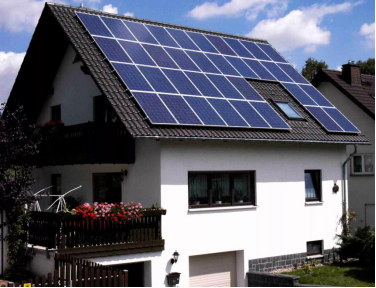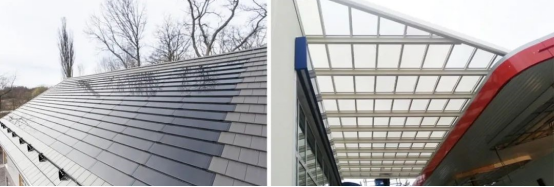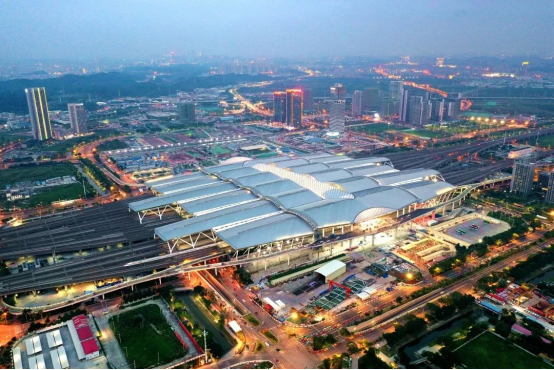Oct. 08, 2022
BIPV (Building Integrated PV) is the integration of photovoltaic buildings. PV is Photovoltaic.
BIPV technology is the technology that integrates solar power (photovoltaic) products into buildings.
Different from the current large-scale rear photovoltaic roof system (BAPV), which uses special brackets to fix photovoltaic components to the original roof structure, the integrated photovoltaic roof system (BIPV) adopts a one-time construction and investment model.
When building roof construction, photovoltaic power system bracket accessories, photovoltaic power generation component panels and other electrical equipment are installed directly on the roof.

BAPV refers to a solar photovoltaic power generation system attached to a building, also known as an "installed" solar photovoltaic building. Its main function is to generate electricity, does not conflict with the function of the building, and does not destroy or weaken the function of the original building.
In addition to power generation functions, BIPV will also have the structure and use functions of the building itself, replacing the components of the original roof of the building and becoming an integral part of the building.
As a building component, photovoltaic power generation components not only need to meet the requirements of power generation and building functions, but also meet the physical and chemical characteristics of weather resistance, safety, firmness and sealing of the material.

The integrated roof power generation system of photovoltaic buildings is installed and fixed through the overall support system and island support composed of brackets, transverse sinks and longitudinal sinks. It is fastened and sealed by interlocking. Not only is the overall structure lightweight and material-saving, but the installation structure of solar power generation components is extremely stable, with long service life, and easy to install, disassemble and maintain.
I. Economic costs
According to the actual construction data, comparing the economic cost of BAPV and BIPV systems, the integrated roof system of photovoltaic buildings can save 164 yuan per square meter.
The traditional steel structure rear photovoltaic power generation roof installs brackets and photovoltaic battery panels later on the color-pressed metal plate. The roof is messy and has poor integrity.
Photovoltaic Building Integrated Roofing System (BIPV) integrates solar energy utilization into the overall design of the building, integrates architecture, technology and aesthetics, and directly uses photovoltaic power generation component unit boards and maintenance aisle panels as roof panels. In BIPV buildings, junction boxes, cables, etc. can be hidden under components and pedals through relevant designs.
This can not only prevent direct sunlight and rain erosion, but also do not affect the appearance effect of the building. It perfectly combines solar photovoltaic power generation with the building. The roof is beautiful, and concise with distinctive characteristics of modern industrial architecture.
III. Design life
Because the photovoltaic power generation components of the rear photovoltaic power generation roof of traditional steel structure are all in an open-air environment, the long-term wind and rain are blowing, and the service life is generally 20 years, up to no more than 25 years.
The photovoltaic power generation components of the integrated roof of photovoltaic buildings are only exposed to the roof and have a good sealing environment. The glue used for the packaging of BIPV photovoltaic components is PVB, while the PVB film has the characteristics of transparency, heat resistance, cold resistance, moisture resistance and high mechanical strength, and has maturely applied to the production of laminated glass for construction. It can achieve a service life of 50 years or more.
In addition, in the BIPV system, the selection of photovoltaic special wires (double-layer cross-linked polyethylene tin-impregnated copper wire), the selection of large wire diameters, and the selection of equipment such as excellent performance connectors can extend the service life of the BIPV photovoltaic system.
BIPV solution - Xiongan New Area high-speed rail station
IV. Roof force
The pressure of the pressed metal plate (colored steel plate or aluminum, magnesium and manganese plate) of the traditional steel structure rear photovoltaic power generation roof is complex. Metal plates and photovoltaic panels have both wind-borne positive and negative pressure. The force of photovoltaic panels is transmitted to the pressed metal plate through the bracket, and long-term wind load and deformation will produce fatigue effects and affect structural safety.
The integrated roof of photovoltaic buildings is just a simple roof, with clear structural force and high structural safety.
In addition, the system adopts double-sided glass components. The thickness of tempered glass conforms to the national architectural design code. It is obtained through strict mechanical calculation, which can meet the roof safety requirements.
V. Waterproof and Reliability
After the rear photovoltaic power generation roof of the unified steel structure is installed on the roof of the pressurized metal plate (colored steel plate or aluminum, magnesium and manganese plate), the second installation of photovoltaic components and other equipment on the later roof will cause permanent settlement and deformation of color steel plate or aluminum, magnesium manganese plate due to lifting, construction pedal, long-term photovoltaic self-weight load and local equipment overload. It causes hidden water leakage in the later stage and is difficult to overhaul and find leakage points. With the longer the service life, there will be more and more hidden leakage hazards.
The integrated roof system of photovoltaic buildings mainly adopts hydrophobic glass panels with the main sink, waterproof seal, etc. to form a roof anti-drainage system. The roof structure, pan-water edging, lighting belt, etc. are composed of modular combinations. The main water slot and other stress components use a card buckle zero perforation connection. The reliable sealing bars and the component (or pedal) are used to fix and seal. Pan-water edges adopt welded connection. The system design has a anti -vibration system, which can effectively prevent high frequency wind load on the beach, effectively digest and deformation, and deformation of temperature. The non-perforated connection technology on the surface of the roof to avoid hidden dangers of leakage.

BIPV solution - Guangzhou South Railway Station
VI. Difficulty and speed of construction
The traditional steel structure rear photovoltaic power generation roof is constructed in two phases, with a long construction cycle. It is difficult to construct aluminum, magnesium and manganese roof panels with vertical locking edges.
The integrated roof construction of photovoltaic buildings is less difficult, the installation speed is fast, and the project progress is guaranteed. After completing the construction of the bracket and sink, at least 40 square meters (25 components) are installed per person per day. Taking the 10,000 square meters main roof as an example, about 20 men can complete the assembly installation and the overall sealing of the roof.
VII. Roof operation and maintenance
The traditional steel structure rear photovoltaic power generation roof has been stepped on many times during construction and maintenance, with large roof deformation, many hidden dangers of water leakage, and difficult maintenance.
The integrated roof synchronous design and construction of photovoltaic buildings protects roof components and does not cause secondary construction pedal damage.
The roof of the house is designed and installed with a single battery module as a unit (160cm×100cm), which can be disassembled and repaired at will, which is convenient for maintenance and repair. The maintenance walking pedal set according to the reasonable operation and maintenance radius is not damaged to the roof and components, which greatly protects the completeness of the roof.
Gain Solar is a an carbon neutral solutions expert company established in 2007, which it is the daugher company of Yingli Group. It can provide the building photovoltaic-integrated (BIPV) green material, we envision a world where solar energy is generated by any surface touched by the sun. If you got any questions, please do not hesitate to send us a message. We reply within 24 hours !